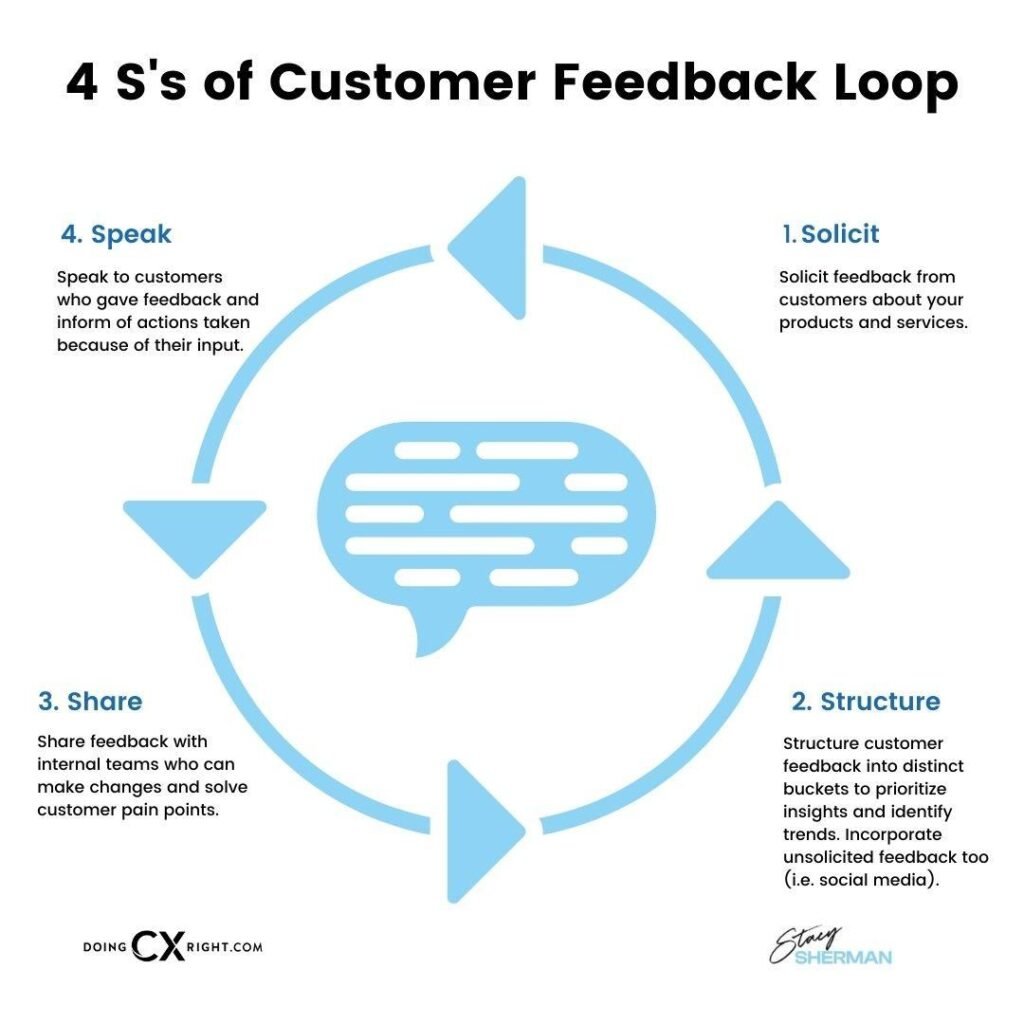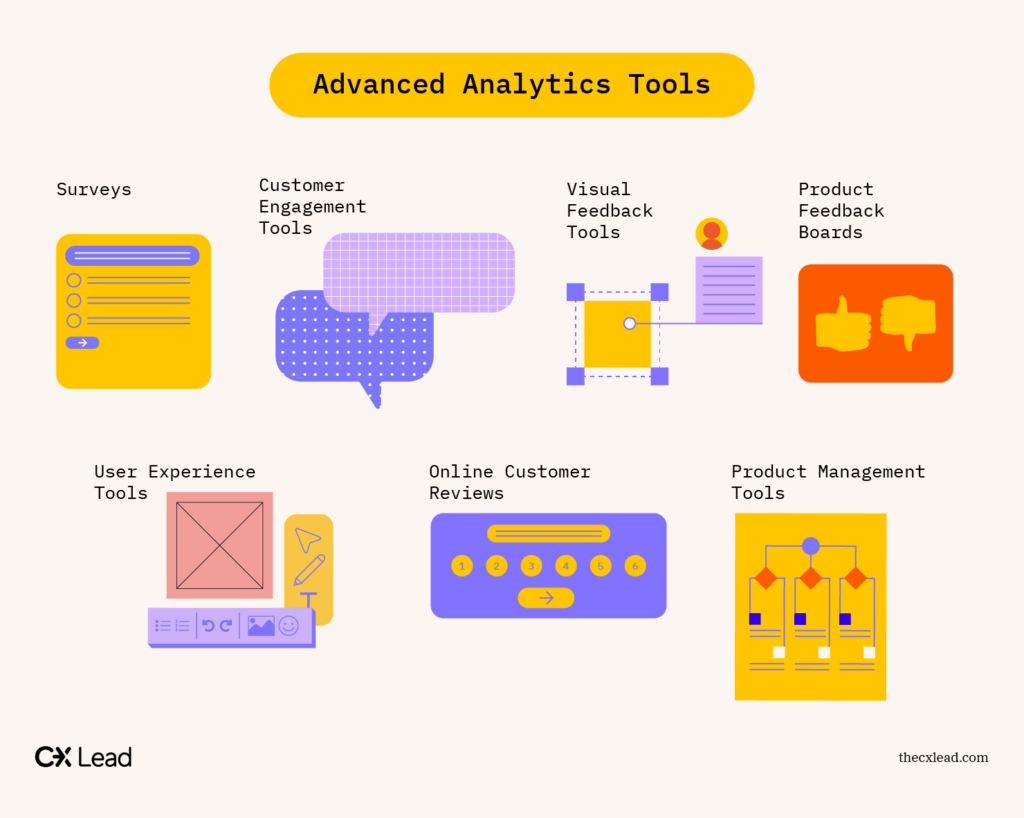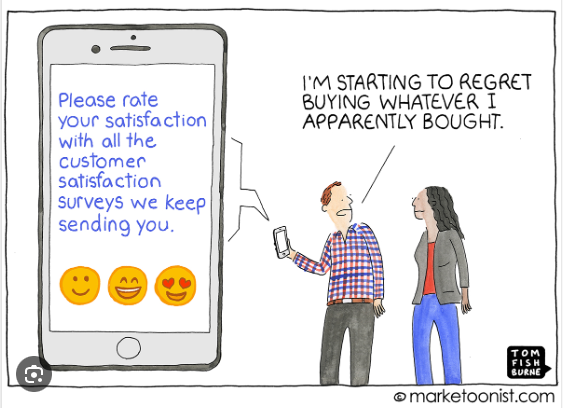Understanding and leveraging customer insights is crucial in the ever-evolving business landscape, driven by technological advancements, changing customer behaviors, and dynamic market trends. However, merely collecting insights is not enough. Organizations must translate quantitative and qualitative feedback into actionable strategies to enhance customer experience (CX). This process, known as "closing the loop," ensures that the time and resources invested in gathering feedback are not wasted. This comprehensive guide explores how to use customer insights effectively and highlights practical processes that CX leaders can implement to close the Voice of the Customer (VoC) loop.
Understanding the Concept of Closing the VoC Loop
The term 'closing the VoC loop' refers to a process that begins with soliciting customer feedback and ends with speaking to customers about the steps taken based on their feedback. This process ensures that customer views don’t fall on deaf ears and that customers can witness tangible changes based on their inputs.

The Importance of Closing the VoC Loop
Closing the VoC loop is beyond just listening to customers; it's about taking action. When business leaders fail to act on the feedback they receive, they risk wasting valuable insights that could drive improvement. Closing the loop is a way to ensure that the feedback collected is put to good use, leading to tangible improvements in the customer experience.
Actionable Ideas for Using Customer Insights
Establish Clear Goals
The first step in using customer insights effectively is to set clear objectives. These will guide the type of data you collect and how you analyze it. Whether you aim to improve product features, enhance customer service, or increase customer loyalty, having established clear plans will ensure that your VoC program is focused and effective.
Use Advanced Analytics Tools
In the digital age, businesses have a wealth of tools to help them better understand their customers. AI-powered analytics platforms can provide deeper insights into customer behavior, preferences, and patterns, enabling you to make data-driven decisions. Each tool has unique benefits and varies in cost, so I recommend researching each to determine the best fit for your needs. Here’s a list of the 12 best customer feedback tools to kick off your search.

Segment Your Customers
Not all customers are the same. Therefore, it is essential to segment them based on various criteria like demographics, purchasing behavior, or customer journey stages. This segmentation will allow you to create personalized strategies that offer your brand a competitive advantage.
Regularly Update Your Customer Persona
Customer preferences change over time. Therefore, continuously update your customer personas to reflect these changes. Use the latest research to keep your personas relevant and targeted. You can lead your own study or buy research from reputable firms such as Gartner, Forrester, Nielsen, eMarketer, and more. Make it as real as possible.
Practical Processes to Ensure Effective Changes and Close the VoC Loop
Solicit and Develop a Customer Feedback Mechanism
To close the VoC loop, organizations must have a reliable customer feedback mechanism. This could be through surveys, social media, customer service interactions, third-party review sites, and other channels.
Structure and Prioritize Feedback Based on Impact
Not all customer feedback will be equally critical. Therefore, use an impact-effort matrix to prioritize actions based on their potential impact on customer satisfaction and the effort required for implementation.
Share feedback with Internal Teams Who Can Fix Customer Pain Points
Implement a closed-loop system that automatically routes customer feedback to the right teams. This system ensures immediate attention to pressing issues, allowing your team to respond quickly and effectively.
Speak To Customers. Inform What Actions Were Taken
The final step in closing the VoC loop is communicating to customers. Tell them you heard their feedback and explain how you address their concerns. This communication builds trust and strengthens the customer relationship. A win-win for all!
Common Mistakes in Collecting Voice of the Customer (VoC) Feedback
Even though collecting Voice of the Customer (VoC) feedback is crucial for organizations, there is often room for considerable improvement. By being aware of potential pitfalls, you can proactively circumvent them, enhancing your VoC program's effectiveness.
Not Asking the Right Questions
The quality of the feedback you receive largely depends on your questions. It's crucial to ask straightforward, concise, and relevant questions that will provide actionable insights.
Ignoring Negative Feedback
Negative feedback can be challenging to hear but is often the most valuable. Take all feedback into account, not just the positive. Read that again!

Failing to Act on Feedback
Collecting feedback is only the first step. The real value comes from acting on that feedback to improve the customer experience. Failing to do so can lead to customer dissatisfaction and churn.
Over-Surveying Customers
While gathering customer feedback is important, sending too many surveys can lead to survey fatigue, resulting in lower response rates and less reliable data.

Relying Solely on Quantitative Data
Quantitative data like ratings and scores can provide valuable insights, but it's also important to collect qualitative feedback to understand the reasons behind these numbers.
Not Integrating VoC with Other Data
VoC data can be much more powerful when combined with other data like purchase history, usage data, and demographic data. Failing to integrate these data sources can lead to a less complete understanding of the customer experience.
Not Training Staff on VoC Importance and Use
All staff, not just customer-facing roles, should understand the importance of VoC and how to use feedback in their roles. Failing to do so can lead to missed opportunities for improvement.
Identifying Red Flags in Data Analysis
Data analysis is a critical component of decision-making in businesses. However, certain 'red flags' or warning signs can easily get lost amidst the vast amount of data. Recognizing these early red flags can help businesses take corrective measures and avoid pitfalls.
Inconsistent Data
One of the first red flags to look out for is data discrepancies. These could be inconsistencies between different data sources, sudden trend changes, or data points deviating significantly from the norm. For instance, if your sales data shows a sudden and unexplained spike in sales, it could be due to an error in data entry or reporting. Such discrepancies warrant further investigation to identify the root cause.
Missing Data
Another common issue is needing more data. If specific data points or entire data sets are missing, it could lead to inaccurate analysis and conclusions. Therefore, it's essential to have a system in place to check for and handle missing data. Depending on the situation, you can exclude, attribute, or use statistical methods to deal with missing data.
Lack of Data Validation
Lack of data validation is another red flag. Data validation involves checking the data for accuracy and quality before being used in the analysis. If data validation is not done, it could lead to errors in the research and incorrect conclusions.
Overemphasis on Outliers
While outliers can sometimes provide valuable insights, overemphasizing these can skew the analysis and lead to incorrect conclusions. Remember to identify outliers and understand their impact on your data analysis before reporting findings to others.
Overreliance on a Single Data Source
Relying too heavily on a single data source can also be a red flag. Different data sources can provide different perspectives, and depending on just one can lead to a narrow and potentially biased view. I recommend using multiple data sources to understand the situation comprehensively.
Ignoring the Context
Don't analyze data in isolation. Ignoring the context in which the data is collected can lead to misinterpretation. For instance, a sudden increase in website traffic might seem positive, but if it's due to a negative news story about your company, it's a red flag.
Not Considering the Bigger Picture
Focusing too much on the details and not considering the bigger picture can also lead to misinterpretation. Understanding how individual data points fit the overall trend or pattern is paramount.
In general, being aware of these red flags can help you navigate the fog of data analysis. By ensuring data quality, validating your data, using multiple data sources, understanding the context, and other VoC best practices, you can avoid these pitfalls and make more accurate and informed customer-impacting decisions.
Practical CX Models From Leading Brands
The article "Voice of Customer Examples From 6 Leading Companies" presents several studies illustrating the importance of Voice of Customer (VoC) programs. Good ones to dive deeper into include:
- Intuitive Health implemented consistent survey practices, resulting in a 24% response rate and higher patient retention. They also established a system to address issues raised by detractors or passives, leading to improved patient experiences and an impressive Net Promoter Score (NPS) of 81.
- Just Eat food delivery service uses a dedicated Account Management team to work directly with restaurants, ensuring the best B2C experience possible. They close the loop on 97% of all detractors within 48 hours, leading to improved customer satisfaction.
- Heineken beverage company uses Account Experience to strengthen their relationship with bar owners. They sent out 600 relational surveys and used the feedback to fuel conversations with unhappy customers, turning detractors into promoters.
- Coca Cola HBC (CCH) won the Most Engaged Award for its use of Account Experience to drive higher NPS scores and create value for customers while empowering employees. They deployed the AX across all sales teams and markets, putting the customer first in all transactions.
- Honda uses technology to strategize its customer outreach and customize messaging. They use customer feedback to influence operations, leading to innovations in repair programs, prevention, and staff training resulting in NPS of 82. More info here.
These and more VoC examples show that voice of the customer programs are crucial for improving products, services, and customer loyalty. And, when VoC is tied to company action and revenue, customer satisfaction increases along with the value of the business.
Closing the Loop
Customer experience management is a continuous process that requires commitment, effort, and the right tools. You can use insights effectively by setting clear goals, using advanced analytics tools, segmenting your customers, and regularly updating your customer personas. Furthermore, by developing a customer feedback mechanism, using a closed-loop system, prioritizing feedback based on impact, and communicating back to the customers, you can ensure swift changes and close the VoC loop. Avoiding common mistakes in collecting VoC feedback and identifying red flags in data analysis can further enhance your VoC process.
With these strategies, you can make the most of your program and deliver an exceptional customer experience that your customers have come to expect.
For more articles like this, don't forget to subscribe to The CX Lead newsletter!


